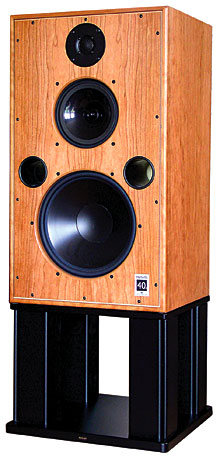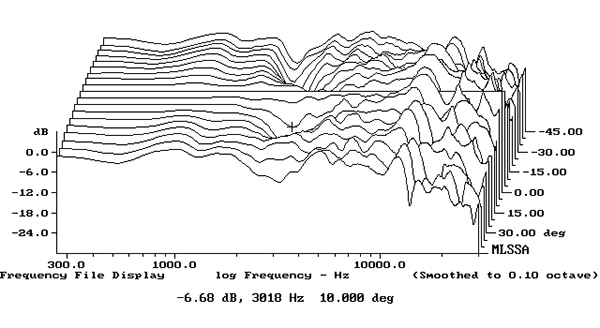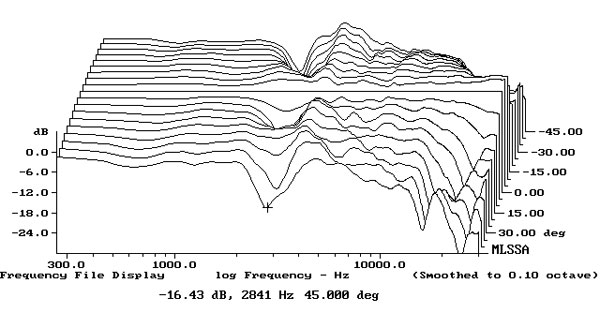Is that the crossover to the super tweeter? I can see no technical reason for continuing with this 3 way arrangement, when using a good modern cheap tweeter would be better.Stereophile measured the SHL5+ XD.
Can anyone explain what’s going at the FR >10kHz???
View attachment 359648
-
WANTED: Happy members who like to discuss audio and other topics related to our interest. Desire to learn and share knowledge of science required. There are many reviews of audio hardware and expert members to help answer your questions. Click here to have your audio equipment measured for free!
You are using an out of date browser. It may not display this or other websites correctly.
You should upgrade or use an alternative browser.
You should upgrade or use an alternative browser.
Harbeth Super HL5+
- Thread starter Roy_L
- Start date
That is an M40, first of all, second, the meters are measuring apparent power*, so it really is not nearly as bad as advertised. Indeed, they do NOT drop below 2 ohms.There is a video on YouTube I saw long ago that shows the Harbeths dropping below 2ohms for some low frequences. That is really hard on an amplifier that doesn’t have huge power reserves and a lot of current output. I think you have exactly found the issue.
Here, I found the video: Harbeth power needed

* the track being used has a loud pedal tone right around the frequency where impedance and phase angle are most acute in this graph. There’s a thread where we go back and forth about this on this very site.
Again? I know they did that with the SHL5+ and there was quite a back and forth with Alan. I think, honestly, the super tweeter integration isn’t what it should be. It doesn’t really come into play for me.Stereophile incorrectly measured at the supertweeter axis. The reference axis for this speaker is at the main tweeter.
And you aren’t comparing directivity, which has room for improvement in Harbeths.No, I am sure what you are seeing is an insufficiently consistent measurement protocol.
Sure, I was only comparing the two graphs, and offering a hypothesis for the differences. I know Harbeth are very intent on a flat response, so a deterioration is unlikely. As a research scientist, my first reaction would be to look at the measurement protocol. Measuring speakers consistently is not easy.
Why is that a insufficient measurement protocol?No, I am sure what you are seeing is an insufficiently consistent measurement protocol.
can you explain , please?
do you have a sufficient one?
- Joined
- Jan 15, 2020
- Messages
- 6,867
- Likes
- 16,821
They might measure quite flat a specific vertical angle but having that nowadays superflous supertweeter (the original Spendor BC1 needed it because the Celestion HF1300 tweeter didn't extend above 13 kHz) creates lobes at already small vertical angles so even if someone would find the angle where they add up nicely it doesn't mean much when few degrees higher or lower they don't:Sure, I was only comparing the two graphs, and offering a hypothesis for the differences. I know Harbeth are very intent on a flat response, so a deterioration is unlikely. As a research scientist, my first reaction would be to look at the measurement protocol. Measuring speakers consistently is not easy.

Fig.5 Harbeth Super HL5plus XD, vertical response family at 50", normalized to response on super-tweeter axis, from back to front: differences in response 45–5° above axis, reference response, differences in response 5–45° below axis.
Source: https://www.stereophile.com/content/harbeth-super-hl5plus-xd-loudspeaker-measurements
Fortunately the other Harbeth models don't have a supertweeter which can be positively observed in the vertical direcitivity measurements, exemplary:

Fig.5 Harbeth Monitor 30.2, vertical response family at 50", normalized to response on tweeter axis, from back to front: differences in response 45–5° above tweeter axis, reference response, differences in response 5–45° below tweeter axis.
Source: https://www.stereophile.com/content...-anniversary-edition-loudspeaker-measurements
I said inconsistent. You measure the same thing twice, and yet you get slightly different results. In this case, there was a quite considerable period of time between the two measurements. Maybe the speaker was in a marginally different position in the room, or the room was not quite the same because objects had been moved. There are umpteen possibilities. As for the high frequency peak, that is well above human hearing and therefore irrelevant. The new active Harbeth speakers with dsp controlled electronic crossovers no longer have a super tweeter, and have a superbly flat response.
- Joined
- Jan 15, 2020
- Messages
- 6,867
- Likes
- 16,821
Thankfully also all their past models except the ones of the HL5 family which had it as a kind of tribute/modernised BC1.The new active Harbeth speakers with dsp controlled electronic crossovers no longer have a super tweeter
Will be interesting to see their off-axis / directivity measurements as making a loudspeaker flat just on one reference angle is not difficult nor enough to make it a well measuring neutral transducer.and have a superbly flat response.
What’s interesting about the Harbeths is that, while they don’t have the infamous Gundry Dip on-axis, their off-axis power drops in the same region (see the + in the graph above), which would create a sound power flattening at the same spot. I wonder whether people sort of like that.Thankfully also all their past models except the ones of the HL5 family which had it as a kind of tribute/modernised BC1.
Will be interesting to see their off-axis / directivity measurements as making a loudspeaker flat just on one reference angle is not difficult nor enough to make it a well measuring neutral transducer.
I enjoy my Harbeths - they sound right through the midrange, and instrument timbre feels very accurate to me. Where they lag in comparison to my Revels is with orchestral music. You want to be closer to the speakers for that. I can spin a narrative that relates that to directivity, but I don’t know for sure.
- Joined
- Jan 15, 2020
- Messages
- 6,867
- Likes
- 16,821
I would say definitely, many well sounded loudspeakers without waveguides have their crossover frequency to the tweeter relatively high so there is a sound power dip at the presence region.What’s interesting about the Harbeths is that, while they don’t have the infamous Gundry Dip, their off-axis power drops in the same region (see the + in the graph above), which would create a sound power flattening at the same spot. I wonder whether people sort of like that.
DSJR
Major Contributor
Stereophile measured the SHl5, 5+ and 5+XD on the axis of the 'super tweeter,' yet in at least one of these reviews, they mentioned that the main tweeter is the axis as designed. Like the dear old now ancient Bc1, the response is a bit of a mess where the two tweeters overlap (deliberate on the BC1 though according to a long-ago chat with Spencer Hughes, who was another designer happy to talk - and share - to peeps like me while he was alive [r.i.p. sir!]) - Dear Dudley Harwood who started Harbeth was too shy sadly and when visiting us, stood quietly and anonymously in the corner waiting to speak to our sales manager and you'd never know he was there. The current boss/designer has stated many times now that almost NO reviewer ever checks or cross checks with them to find out more about the company, products or the ethos behind it all. Heck, in that position of reviewing as honestly as I could, I'd LOVE to find out more about the gear I was evaluating/measuring to build up proper knowledge and experience (which I did as much as I could when on my side of the counter!) and to me, that's why some honest, caring and communicative makers/designers of speakers and electronics who post here on ASR should be encouraged and respected so they stay and contribute more - in my opinion of course. I feel we all gain then and learn a lot from their gentle 'education'...
I said inconsistent. You measure the same thing twice, and yet you get slightly different results. In this case, there was a quite considerable period of time between the two measurements. Maybe the speaker was in a marginally different position in the room, or the room was not quite the same because objects had been moved. There are umpteen possibilities. As for the high frequency peak, that is well above human hearing and therefore irrelevant. The new active Harbeth speakers with dsp controlled electronic crossovers no longer have a super tweeter, and have a superbly flat response.
So it’s impossible to compare different speaker measurements?
do you know how Stereophile do arrange their measurements?
Similar threads
- Replies
- 4
- Views
- 2K
- Replies
- 1
- Views
- 416
- Replies
- 20
- Views
- 6K
